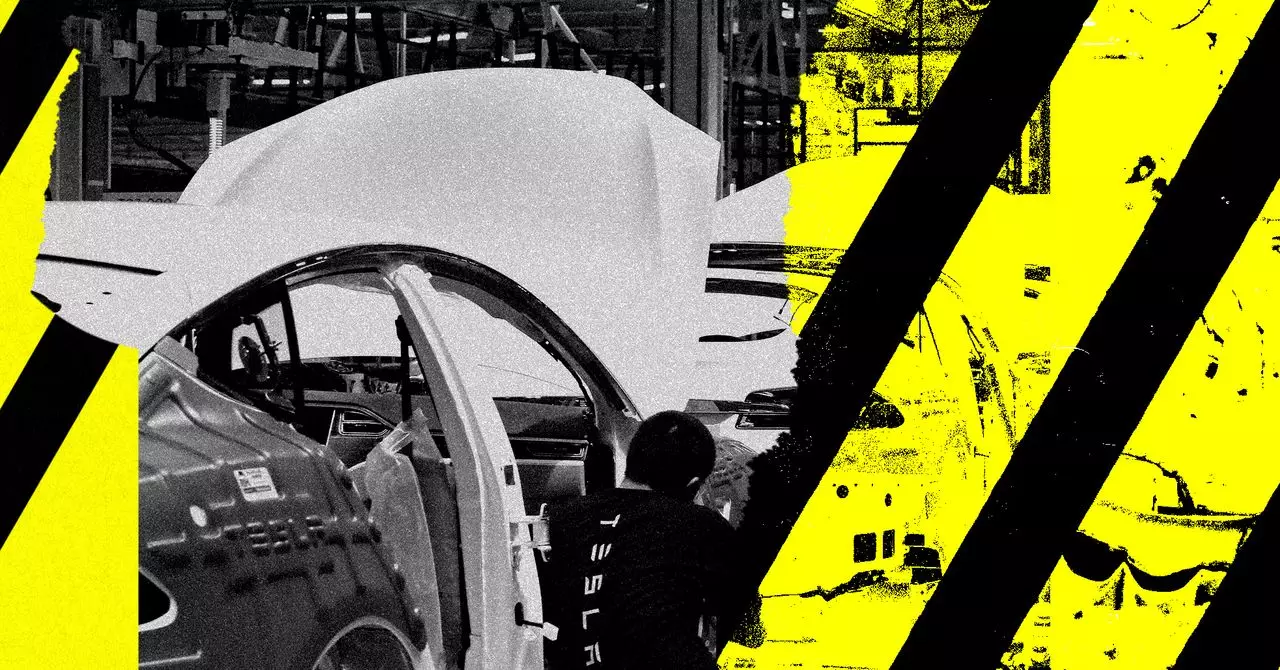The realm of high-tech manufacturing, especially in companies like Tesla and SpaceX, has often been heralded as a beacon of innovation and forward-thinking. However, beneath this glossy surface lies a troubling narrative of workplace safety failures and ongoing disputes with regulatory agencies. The recent memo from the AFL-CIO has reignited discussions surrounding numerous safety incidents at these institutions, revealing disconcerting patterns that demand immediate attention.
Alarming Accident Reports and Safety Violations
The memo from the AFL-CIO raises significant alarm bells by documenting over twenty reported accidents and alleged safety issues since 2016 across Tesla, SpaceX, and The Boring Company. Among the most harrowing incidents is the death of licensed electrician Victor Joe Gomez Sr. at Tesla’s Gigafactory in Austin, Texas. Gomez was electrocuted while inspecting electrical panels that had not been properly isolated—a grim reminder of the potential consequences when safety protocols are neglected. This tragic case, still unresolved as Tesla contests OSHA’s findings, emphasizes a troubling culture surrounding employee welfare at these cutting-edge companies.
In stark contrast to the promised safety advancements, incidences of severe injuries have also emerged. Two separate OSHA citations for fingertip amputations at Tesla illustrate the grave risks faced by workers on a daily basis. Such alarming statistics beckon a closer examination of the internal processes and attitudes towards workplace safety at these pioneering firms.
SpaceX’s Disturbing Incident with Automated Machinery
The narrative continues to unfold at SpaceX, where an employee suffered a skull fracture and severe head trauma after an incident involving newly automated machinery. The OSHA accident report classified this troubling event as a “technical problem,” leading to the employee being hospitalized and placed in a coma for several months. In this case, unlike many others at Tesla, SpaceX accepted the OSHA citation along with a fine of $18,475—a clear indicator that some level of accountability is being recognized, though the questions surrounding broader safety practices remain pressing.
AFL-CIO’s Role and Perspective
The AFL-CIO’s involvement provides a critical perspective on worker advocacy, given that it collaborates with the United Automobile, Aerospace & Agricultural Implement Workers of America (UAW) while not directly representing Tesla or SpaceX employees. Liz Shuler, the federation’s president, has voiced concerns regarding repeated claims from Tesla employees about the company’s inadequate prioritization of safety. This advocacy plays a crucial role in amplifying workers’ voices, particularly in high-stakes industries like those led by Elon Musk.
Debbie Berkowitz, a former chief of staff at OSHA, reinforces this sentiment, asserting that serious safety hazards exist at Tesla. This commentary raises crucial questions about the ethical responsibilities of leadership in safeguarding workers—particularly in industries praised for their innovation but criticized for their labor conditions.
Legal Maneuvering and its Implications for Safety
The occurrences of Tesla actively disputing safety citations is particularly troubling. According to public databases, nearly 60% of the OSHA citations issued to the company in the past five years remain unresolved, illustrating a strategy that could be interpreted as a delay tactic. David Michaels, a former OSHA assistant secretary, suggests that some companies, rather than rectifying hazards, may prefer engaging in drawn-out legal battles. This approach not only puts workers at risk but also sets a concerning precedent regarding corporate accountability.
The implications of this legal maneuvering are profound. By keeping cases open, companies evade the need to rectify the conditions that lead to reported accidents. The juxtaposition of financial costs—small fines against extensive legal expenses—reveals a moral dilemma where profit can overshadow the imperative of workplace safety.
The Future of Workplace Safety in Innovative Sectors
As we navigate the rapidly evolving landscape of technology and innovation, the growing concerns about safety within leading companies like Tesla and SpaceX must not be brushed aside. There exists an inherent power imbalance between corporations and their employees, particularly in sectors characterized by high stakes and fast-paced development. It is essential for stakeholders, including regulators and labor organizations, to unite in fostering an environment where safety is not a byproduct of progress but a non-negotiable foundation.
Workers deserve a voice in their safety, and as these companies spearhead initiatives for the future, they must also carry the responsibility of ensuring their workforce is not left vulnerable. The ongoing scrutiny from the AFL-CIO and various safety advocates serves as a vital touchstone, reminding us that achieving greatness in innovation should not come at the expense of those who make it possible. With more focus on ethical leadership and enhanced safety measures, it is possible to redefine what it means to be at the forefront of technological advancement while truly safeguarding the workforce that drives that progress.

